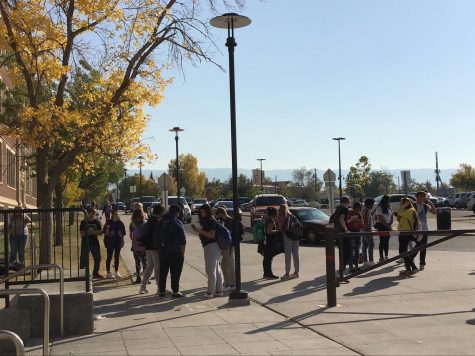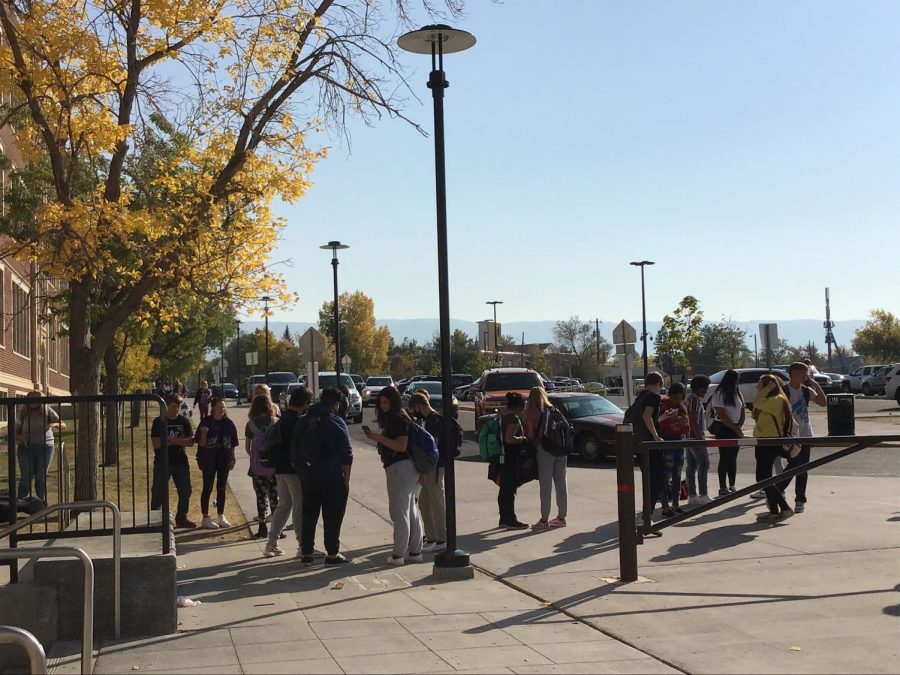Haze blankets Casper, Wyoming
Students congregate outside after school despite the hazy day.The haze that blankets Casper, Wyoming is caused by smoke from the California wildfires and from the Mullen Fire in Medicine Bow National Forest. Many of the students in the photo are not wearing masks, which can increase their risk of contracting Covid-19.
October 30, 2020
The haze that blankets Casper, Wyoming is caused by smoke from the California wildfires and the Mullen Fire in Medicine Bow National Forest. According to Jason Straub, high pressure over Utah can cause the smoke to drift into Wyoming. Until that high pressure moves on, the smoke won’t leave.While this may be annoying, it can also have negative health effects.
According to a report put out by the National weather service earlier last month, “It is recommended by the Wyoming Department of Health that the elderly, young children, and individuals with respiratory problems avoid excessive physical exertion and minimize outdoor activities during this time”. The report also stated that “Wildfire smoke is made up of a variety of pollutants, including particulate matter and ozone, which can cause respiratory health effects. Although these people are most susceptible to health impacts, the Department of Health also advises that everyone should avoid prolonged exposure to poor air quality conditions.” This means that, while people with these conditions should stay inside to avoid respiratory problems, breathing smoke is bad for everyone.

While haze in the summer is a common occurrence, haze this late in the year is less of a usual site. The extreme temperatures and conditions that cause these wildfires are also unusual for this time of year. According to Laurel Wamsley, “Scientists have linked an increasing prevalence and intensity of wildfires to climate change.” This climate change can’t be quickly reversed, making smoke late in the year the “new normal” in the west. While you can’t wish away the smoke, you can help stop climate change.
According to NASA, two ways to stop climate change are by driving more fuel efficient cars and recycling/reusing more. Nasa also says that temperatures are predicted to rise an average of 6 degrees Fahrenheit per year. This means that the wildfires caused by climate change won’t be ending any time soon.

